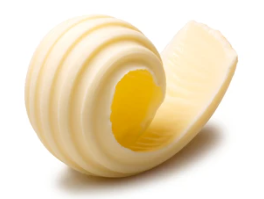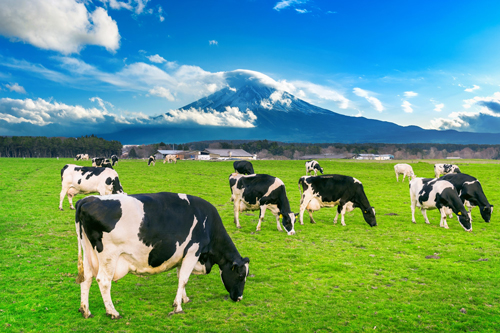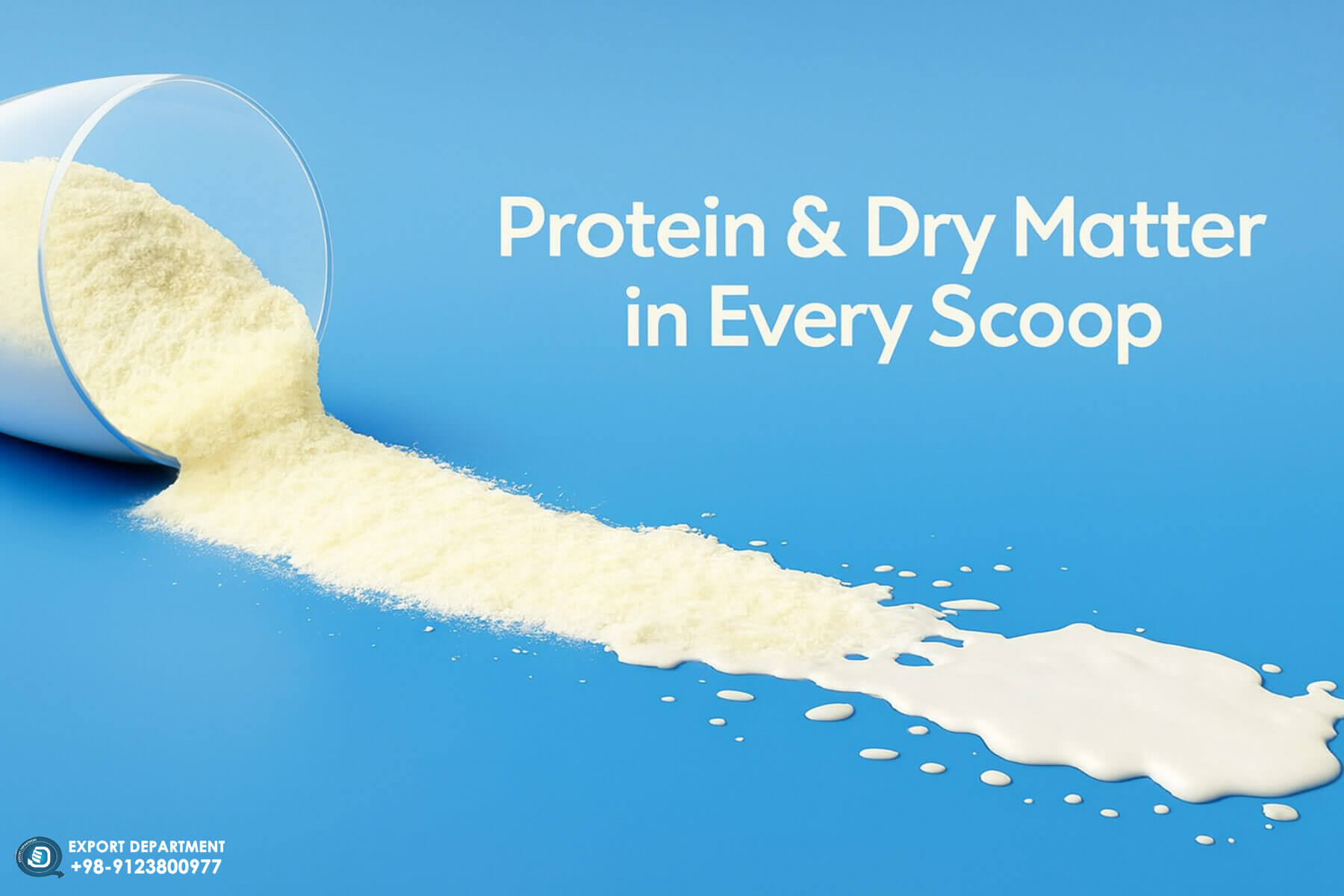What Makes Butter Turn Yellow?
In the production of butter in Chaltafarm Dairy, high-quality beta-carotene is used to achieve a yellow color, so that in addition to the appearance of the butter, its nutritional value is also preserved.
 Regular Butter is one of the fattest dairy products. This high-fat and tasty product is widely used in the preparation of all kinds of homemade dishes and confectionery products. In general, fat-soluble vitamins such as vitamins A and E dissolve in milk fat. The higher the fat content of a dairy product, the higher the number of fat-soluble vitamins. Since milk fat is concentrated in products such as butter and cream, the concentration of vitamin A increases in them. Of course, provided that the production process of such products is a standard process so that such vitamins are not lost or oxidized during the production process.
Regular Butter is one of the fattest dairy products. This high-fat and tasty product is widely used in the preparation of all kinds of homemade dishes and confectionery products. In general, fat-soluble vitamins such as vitamins A and E dissolve in milk fat. The higher the fat content of a dairy product, the higher the number of fat-soluble vitamins. Since milk fat is concentrated in products such as butter and cream, the concentration of vitamin A increases in them. Of course, provided that the production process of such products is a standard process so that such vitamins are not lost or oxidized during the production process.
Beta Carotene
β-Carotene is a type of carotenoid. Carotenoids are natural pigments that exist in plants and give color to fruits and vegetables. There are about 500 types of carotenoids, including lutein, beta-carotene, cryptoxanthin, and zeaxanthin. Beta-carotene is known as the fat-soluble precursor of vitamin A in the body, which is present in plant foods. Since beta-carotene is fat-soluble, it accumulates in the fat of milk and butter.
This compound turns into vitamin A (retinol) in the body, which performs biological functions in the body. Beta-carotene is one of the strong antioxidant substances that prevent the production of oxygen-free radicals in the body.
Almost 50% of the vitamin A in the plant diet is provided by beta-carotene and other carotenoids. Beta-carotene is also produced synthetically.
Beta-carotene is one of the pro-vitamins that are effective in preventing various diseases, including heart diseases and cancers. Vegetables that are dark green, dark yellow, and orange are rich in beta-carotene. In addition, they are low in fat and calories. The darker the green, yellow, or orange color of a vegetable or fruit, the more beta-carotene it contains.
Application of beta-carotene in the food industry
In the food industry, beta-carotene is added to food products such as edible oils, cereals, and beverages as a food coloring to create red and yellow colors and as a source of vitamin A. Butter, margarine, and industrial juices are often enriched with beta-carotene.
Sometimes primary vitamins, i.e. vitamins that were present in milk from the beginning, are added as additives to products such as butter. In Iran, this enrichment happens mostly in the case of butter, where beta-carotene is usually added to butter as a precursor of vitamin A. The more beta-carotene added to the butter, the darker the yellow color.
In fact, the color of butter has nothing to do with the flavor and superiority of dairy butter. The factor that creates the pleasant taste and aroma in butter is a substance called diacetyl with the chemical formula C4H6O2, which has no significant relationship with the factor that causes the yellow color of butter.
In the production of Chaltafarm's butter, high-quality beta-carotene is used to achieve the yellow color, so that in addition to the appearance of the butter, its nutritional value is also preserved. However, Chaltafarm butter is not only available in yellow color but according to the customer's needs, it is also available in white or salted, or unsalted one.
(1).jpg)
Recommended daily amounts of beta-carotene
Because the body is not able to make beta-carotene, it needs external sources. The recommended daily amount of beta-carotene is 6 mg for men and 4.8 mg for women.
The yellow color of butter against the white color of milk and cream
The reason for the difference in the color of milk and butter is primarily the accumulation of more fat in the butter product. Livestock that feeds on forage and plants naturally store the yellow pigment beta-carotene found in plants in their fat. Cows eat grass and the yellow beta-carotene found in these plants is stored in the cows' fat. The pigment is transferred to the milk along with the fat.
Hence, organic butter is often yellow, while the butter produced by cows raised on dairy farms and fed on dried hay and grain is white because their milk lacks beta-carotene. Fat globules in milk or cream are covered by a thin membrane that essentially hides the pigments. Such a structure reflects light in such a way that milk or cream appears white.
When the milk is stirred or pounded with great pressure in the preparation of butter, the membranes around the fat cells are actually broken, so the removed fat cells merge with each other and finally, the fat containing beta-carotene remains. Therefore, the color of butter tends to be yellow. (Milk is mainly composed of water and whole milk contains only more than 3% fat. Meanwhile, the cream contains about 30-40% and the butter contains at least 80% fat.)
Since the yellow color is obtained from beta-carotene found in cow's fat, the amount of beta-carotene in butter oil depends on several factors:
The difference between the color of cow and sheep butter:
Other animals do not store beta-carotene like cows, so butter made from sheep's or goat's milk is white. Butter obtained from animals such as goats, sheep or buffalo is very pale yellow or close to white. In fact, these animals do not store beta-carotene like cows, instead, they convert it into vitamin A, which is a colorless substance. Needless to say, different breeds of cows produce milk with different fat percentages and different fat globule sizes.
The effect of sunlight on the color of butter:
When milk is collected from cows fed on green pastures in late spring or summer, the cows have more beta-carotene-rich forage to chew, so the resulting butter is yellower. The reason why plants are richer in yellow pigment is more sunlight in spring and summer. In the cold seasons of the year, when animals are fed in closed centers and through cereals that do not have much beta-carotene, the butter produced from their milk will be lighter in color.
The effect of animal feed on butter color:
Yellow butter is a mountain butter produced from pasture-fed cows, and its color comes from the beta-carotene content of fresh grass and flowers, while white butter is an industrial butter made from pasture-fed cows. It is prepared with hay and feed. In fact, dairy products from grass-fed cows produce more beta-carotene.

Effect of butter production method and fat content on its color:
While some kinds of butter are made by skimming the fat off fresh milk and churning it, some kinds of butter are cultured. This may affect in butter color. Also, In the United States, butter typically contains 81% fat (80% is the legal minimum to be called "butter" in the United States), and this standard in Iran is at least 80%. For example, the butter produced by chaltafarm dairy has 82% fat. Also, European butter has a higher butter fat content than regular butter. This means there is less water in the butter and more butter fat and milk solids. For those in European countries, 82% is the minimum for all butter sold in stores (82% to 86% milk fat in European vs. 80% to 82% in America). Of course, the difference in fat content between kinds of butter also affects color.
To contact the Chaltafarm dairy export department, refer to the contact section.
| TIMESOFINDIA.COM " Difference Between Yellow And White Butter: What’s Better?" |
| Yellow Butter VS White Butter | Pixstory |
| https://shakelli.ir/ |
| https://fa.ideas-recipes.com/ |
| https://article.tebyan.net/ |
| Image by tawatchai07 on Freepik |
| #chaltafarm_dairy_export #industrial_yellow_butter #industrial_white_butter #betacarotene #whitebutter_vs_yellowbutter |


.jpg)


.jpg)